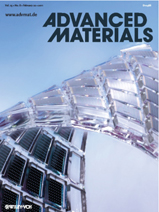
 |
Northwestern engineering professor Yonggang Huang has helped to develop an improved silicon solar cell with one distinct difference — flexibility.
Current silicon solar cells are rigid and brittle. “By making them flexible, you really add a lot of functions,” said Huang.
 The technology, which incorporates the best of silicon solar cells — reliability and high efficiency — with stretchability, might one day be applied to construction materials — for exterior walls and windows, in addition to rooftops — and vehicles or even worn in garments stitched from “solar fabric.” The technology is currently being commercialized.
The technology, which incorporates the best of silicon solar cells — reliability and high efficiency — with stretchability, might one day be applied to construction materials — for exterior walls and windows, in addition to rooftops — and vehicles or even worn in garments stitched from “solar fabric.” The technology is currently being commercialized.
“Our idea in developing a flexible solar cell is to achieve wider use,” said Huang. “If that flexible solar cell can be applied anywhere, that might significantly boost the use of solar energy.”
Huang, the Joseph Cummings Professor of Civil and Environmental Engineering and Mechanical Engineering works closely with his collaborator from the University of Illinois, professor John Rogers. ISEN funding has supported various elements of this research.
ISEN also supports Huang’s work on a technology to harvest energy from motion using piezoelectric material. This material can convert any kind of motion to electricity, but, like silicon, it is very brittle. Huang and Rogers are developing a device from stretchable piezoelectric transducers that can harvest wasted mechanical energy and change it to electrical energy with enough capacity to charge personal electronic devices.